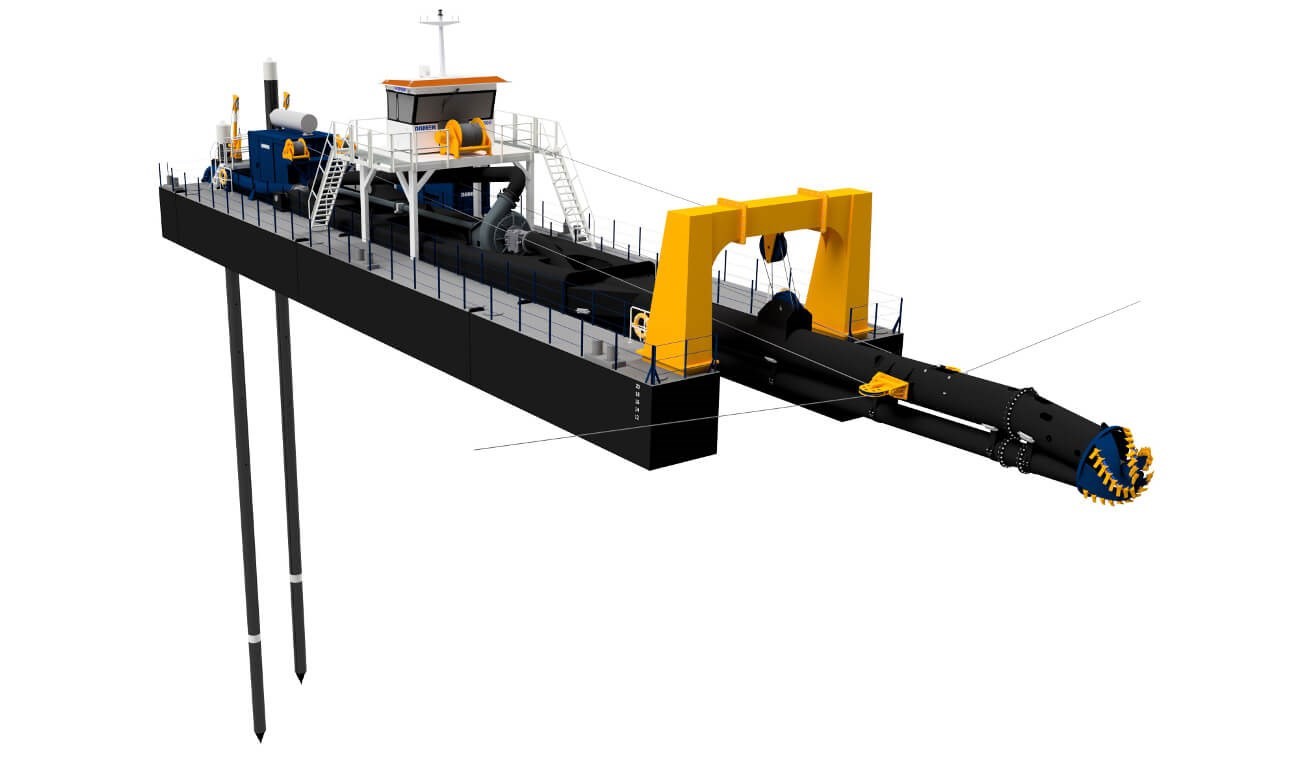Damen has added a twin-hulled, deep cutter suction dredge to its fleet. Designated the DCSD500, the compact dredge is designed to operate at dredging depths that were previously only accessible with large dredges, down to 25 meters (82 feet).
The fully dismountable DCSD500 is designed in a catamaran format with buoyancy provided by pontoons. The suction ladder is centrally mounted between the pontoons and fitted with a submerged dredge pump driven by a 954 kW (1279 HP) CAT type 3512 C TA diesel engine also mounted on the ladder.
The dredge can be controlled by a single individual from the control cabin, which is raised for optimal project overview.
The 110kW (148 HP) cutter unit is designed for breaking up compacted soil and the submerged dredge pump, capable of moving approximately 4,000 cubic meters (5,232 cubic yards) per hour of mixture, operates at high concentrations due to its position below the waterline.
Similar to other Damen dredges, the new model is fully dismountable into container-sized elements ensuring practical transport at low cost to most locations by road, rail, sea or air.
Damen has also designed the new CombiMeter to measure density on all new dredges and retrofits. The CombiMeter consists of a flow meter and a density meter. For the flow meter, an electromagnetic flow meter by Krohne Altometer is used. Added to this is a density meter based on electrical resistance tomography, as developed by ITS (Industrial Tomography Systems). Both are combined in an integrated production meter; the CombiMeter. The CombiMeter has undergone a series of extensive field tests in the Damen Dredging test loop, in the ¡VAMOS! mining project and lastly as a full-scale test on the CEMEX aggregate dredger Sand Falcon.
During the tests, the Sand Falcon dredged a range of materials including fine sand, coarse sand and gravel. All the tests were carried out at sea, comparing data from the new CombiMeter with that from an existing radioactive model. All data from the CombiMeter were within a 1 to 3 percent accuracy range and showed a 0.95 correlation factor with the radioactive type.
The new CombiMeter technology has several advantages over the nuclear density meter. It is a green solution that does not trigger safety issues. The operational cost of the new system is substantially lower as it does not require special permits and licences for transport, storage or use. Moreover, a specialized team for servicing the nuclear meter is no longer necessary.
Full results of all the tests the CombiMeter has undergone will be presented at the Western Dredging Association (WEDA) Dredging Summit and Expo in Chicago. Damen, ITS and Krohne will be present to launch the CombiMeter to the dredging industry.




